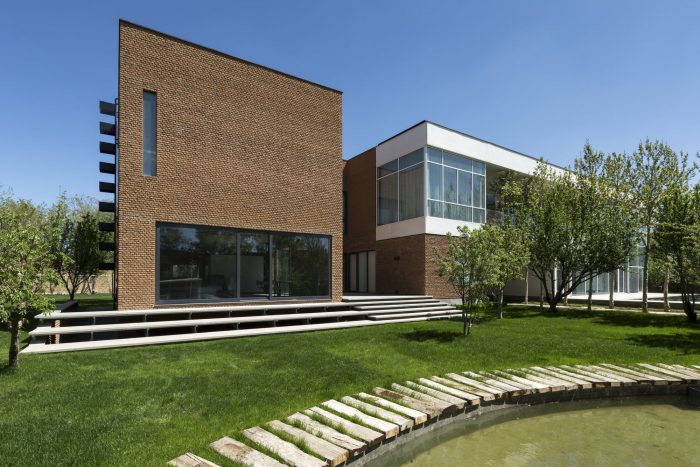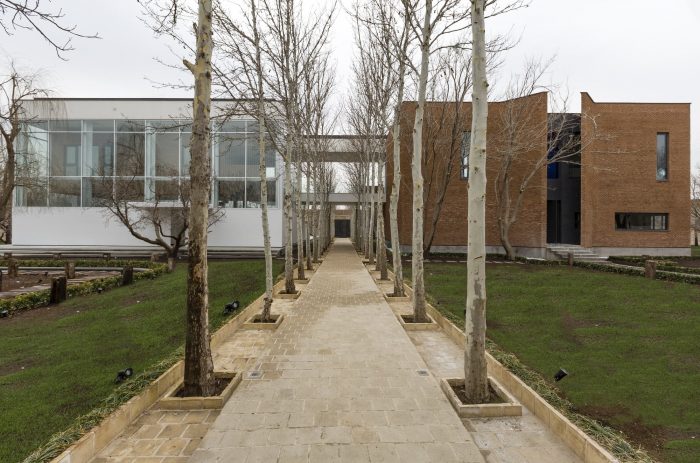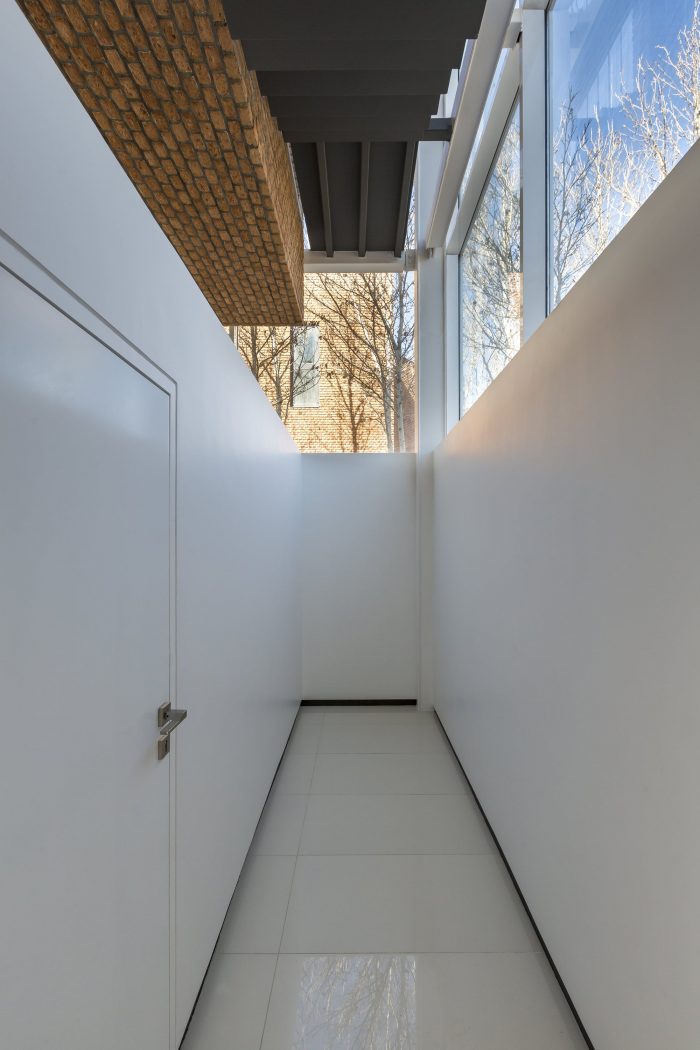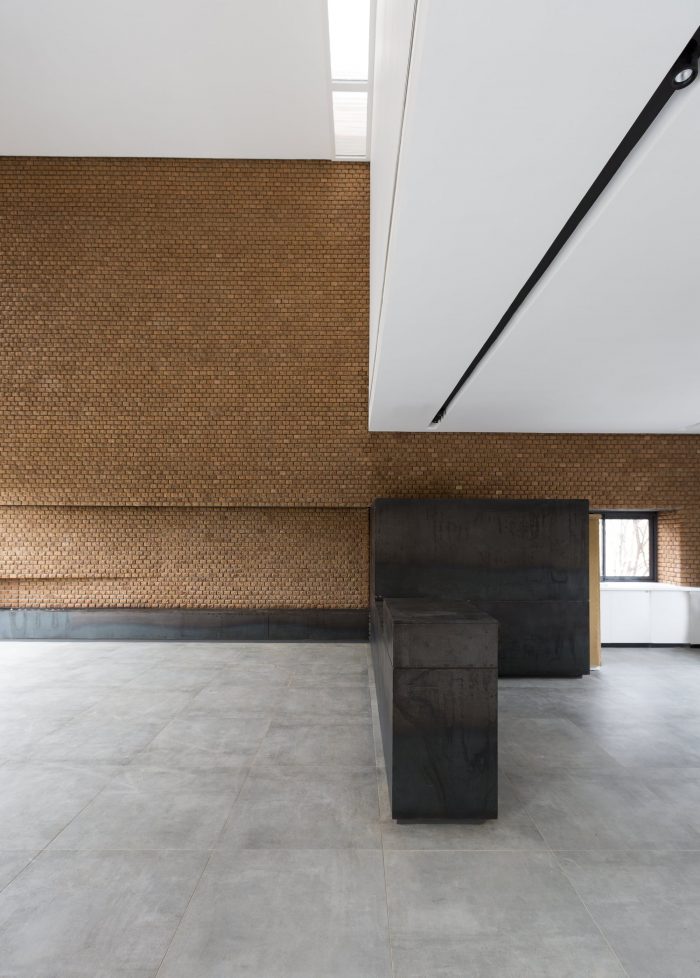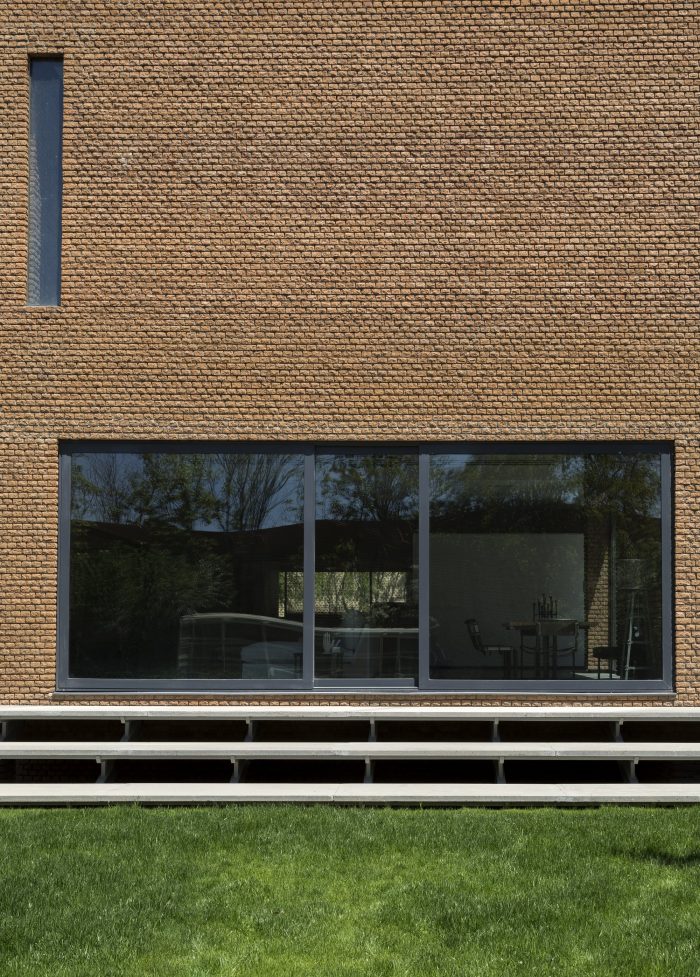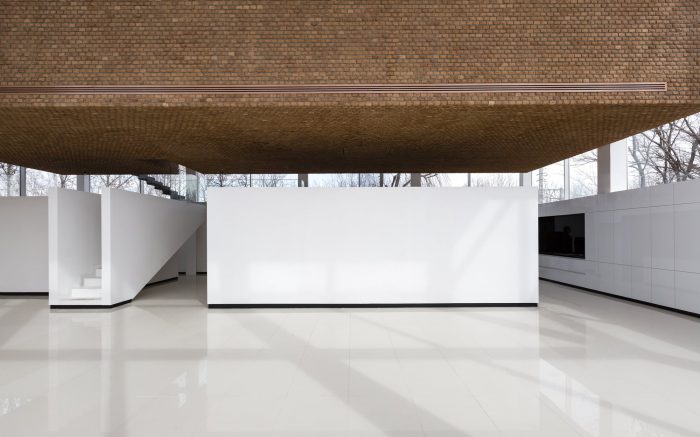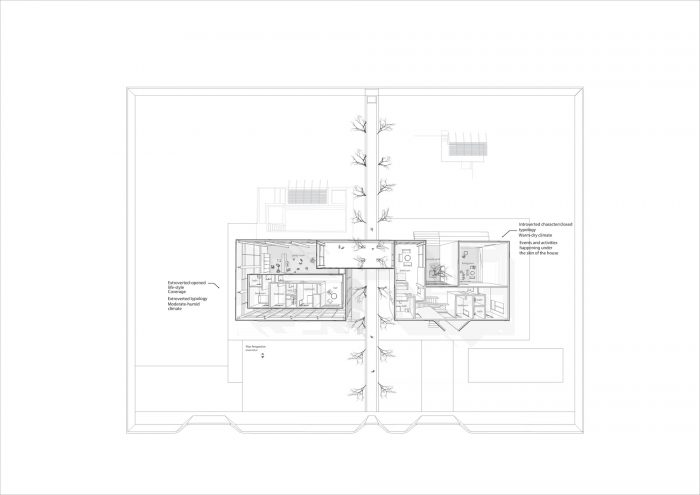代沟一直是一个有争议的问题,今天代沟甚至进一步扩大了。这种差距与其他文化和社会差距一起导致人们认为,生活在伊朗是多种多样甚至相互矛盾的生活方式的共存,从而形成了一个异质的社会。这种生活方式的多样性,特别是在私人与公共、传统与现代、男性与女性等情况下,似乎更加大胆,其影响,在历史上的建筑设计方法中,可以观察到质量与空隙、层次和空间排序之间的关系。这些差异可以在伊朗各个地区的建筑中看到–这些差异通常源于伊朗不同地区的各种文化和宗教意识形态。
Having always been a controversial issue, generation gap has widened even further today. This gap along with other cultural and social gaps have led to the belief that living in Iran is the coexistence of diverse or even contradictory lifestyles which create a heterogeneous society. This diversity in lifestyles, particularly in such cases as private versus public, conventional versus modern, masculine versus feminine, seems to be bolder, the effects of which, in approaches to architectural design throughout history, can be observed on the relationship between mass and void, hierarchy, and spatial sequencing. These differences can be viewed in the architecture of various regions in Iran – differences that normally originate in various cultural and religious ideologies alongside diverse regions in Iran.
这个问题在伊朗各个地理区域的建筑中都有体现,因为这些地区受到了宗教观点和区域条件的影响。在北部地区,社会交往可以更自由地发展,生活在公共区域和围绕着僵硬的房屋中心的半公共空间更常见。然而,在伊朗中部地区,空旷的空间位于建筑内部,要想进入这些空间,就必须穿过曲折的空间。在Safadasht的双重项目中,我们尽力实现这些不同之处,并提出了不同的协调方法,关注生活方式的差异,并将它们联系起来。
This issue has manifested itself in the architecture of various geographical areas in Iran due to the fact that these areas had been influenced by their religious viewpoints and regional conditions. In the northern regions where social interactions could develop more freely, life flowed more commonly in public areas, and the semi-public spaces surrounding the rigid hearts of the houses. However, in the central regions of Iran, empty spaces would be situated inside the buildings, and to access them one had to pass through convoluted spaces. In the twofold project of Safadasht, we tried our best to realize these dissimilarities and come up with varying methods of coordination focusing on differences in lifestyles, and link them.
客户要求在第一块土地上为他的宗教家庭建造一座建筑,这些家庭在农历的穆罕默德月和斋月举行宗教仪式,而在相邻的土地上建造另一座建筑,用于深夜聚会。在两个独立的相邻结构中建造的建筑由两座建筑组成,通过一座桥连接。第一座建筑是用砖头砌成的,是为父母设计的,而第二座建筑是为聚会准备的,主要由玻璃制成,主要由家庭中的小成员支配。该建筑的设计方式是,如果有机会,可以将其分开出售。
The client demanded an edifice on the first lot for his religious family who practised religious rituals in the lunar months of Moharram and Ramadan, and another one on the adjacent lot intended for late-night parties. The construction which has been built in two separate adjoining structures is comprised of two buildings connected by a bridge. The first building, made of bricks, was designed for the parents, while the second building, intended for parties, and predominantly made of glass, was mostly at the disposal of the junior member of the family. The construction was designed in such a way that if the opportunity presented itself could be separated and sold.
第一座建筑的示意图是基于一个中央院子,建筑围绕着它,为了接受边界,采用了砖墙和许多窗户。第二座建筑的示意图的特点是一个由公共和半公共空间包围的刚性核心。此外,在聚会建筑中,我们试图通过连接刚性核心和吊顶来创造一个流动的开放空间,以强调这两个结构的不同之处。展示和反映我们日常生活中普遍存在的矛盾是这个项目的主要挑战,项目结构中存在的不协调性与它的对比性应用完全一致,每个群体都有其相互冲突的特点,能够在不干扰对方的情况下继续生活,就像它贯穿一个家庭的日常生活一样。
The diagram of the first building is based on a central yard with the construction surrounding it, and to accept the boundaries, brick walls and numerous windows have been employed. The diagram of the second building features a rigid core surrounded by public and semi-public spaces. Furthermore, in the party building, it has been attempted to create a fluid open space through connecting the rigid core to a suspended ceiling so as to stress the dissimilarity of these two structures. Displaying and reflecting the paradox prevalent in our daily life had been the principal challenge in this project, and the incongruity present in the structure of the project is perfectly in keeping with its contrasting applications in a way that each group with their conflicting characteristics is able to live on without disturbing the other, just as it runs through the everyday life of a single family.
Architects: NextOffice–Alireza Taghaboni
Area : 1025 m²
Year : 2016
Photographs :Deed Studio, Hamoon Moghaddam, Parham Taghioff, Majid Jahangiri
Green Space Consultant : Babak Mostofi Sadri
Mechanical Installation Design : Payabana Afarin, Mojtaba Arabpour
Electrical Appliance Design : Payabana Afarin, Saeid Afshar
Structural Design : Bastanpol Company (Vahid Gharakhaninia)
Supervision : Mehrdad Makaremi
Execution : Ali Akbar Boluki, Alireza Sibsorkhi, Mohsen Shamshiri
Client : Farhad Vafa
Graphic : Asal Karami, Fatemeh Tabatabaeian, Negar Darzi
Model : Sajjad Hosseini
Architect In Charge : Alireza Taghaboni
Designers : Alireza Taghobani with Sepideh Sarafzadeh, Mojgan Ziaei, Shahab Ramezani, Peyman Nozari, Morvarid Momayezan, Mehrdad Makaremi
City : Tehran
Country : Iran









